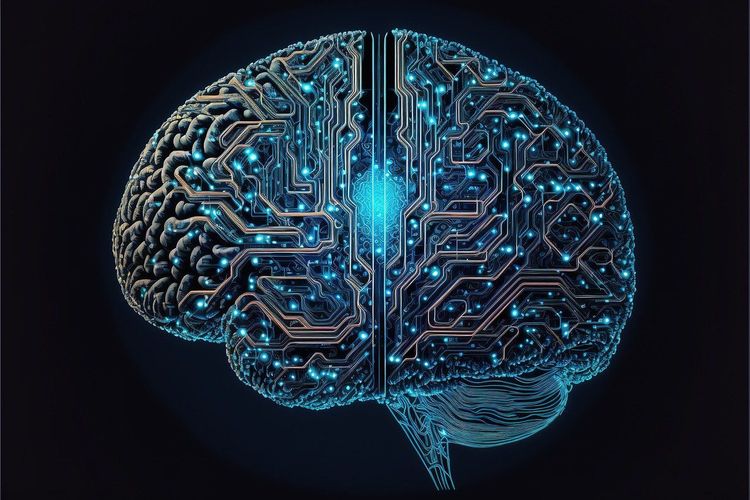Lifestyle-related chronic diseases, including heart disease, cancer, obesity, and diabetes, are responsible for an alarming 74% of deaths worldwide each year. These conditions arise from intricate interactions among environmental factors—such as diet and lifestyle—and individual multi-omic profiles encompassing the genome, epigenome, microbiome, proteome, and metabolome. The multifaceted nature of these diseases complicates their research, prevention, management, and treatment.
### The Role of Precision Nutrition
People's unique multi-omics profiles significantly influence how they respond to dietary choices, leading to a growing interest in ‘precision nutrition.’ This innovative approach merges dietary recommendations with individual biological data to deliver personalized nutritional advice.
#### Data Analysis Techniques
Traditional statistical methods can analyze single biomarkers but falter when tasked with examining the interplay between diet and multi-omic data. Thus, there is a clear need for machine learning algorithms, which are adept at data mining, sample clustering, pattern recognition, and classifying multi-omic data in the context of dietary assessments.
Supervised machine learning techniques, like Orthogonal Projection to Latent Structures Discriminant Analysis (OPLS-DA) and Partial Least Squares Discriminant Analysis (PLS-DA), are the go-to choices for multi-omics research, enabling accurate predictions of how individuals respond to specific diets. These algorithms evaluate various factors to generate a comprehensive prediction model.
Conversely, unsupervised machine learning algorithms such as Principal Coordinates Analysis (PCoA) and Principal Component Analysis (PCA) serve exploratory purposes by identifying patterns within the data and helping stratify populations into subgroups. Semi-supervised techniques can enhance these classifications even with partially labeled data. The capacity of machine learning to dissect complex interactions between dietary habits and multi-omics profiles makes it essential in escalating precision nutrition research.
### Overcoming Dietary Assessment Challenges
Accurate dietary intake data are critical yet traditionally challenging to capture due to reliance on self-reported measures, which often result in under- or over-reporting. Image recognition technology powered by AI can dramatically change the landscape of dietary assessments. Smartphone applications can identify foods, utilize food databases, and even scan barcodes to compute nutritional content.
Deep learning models can recognize variations in food images, segmenting different items by analyzing pixel data. However, identifying food items accurately poses challenges. Variations in appearance during preparation, the potential for combining multiple foods, and similarities between different food items can all lower classification accuracy. Additionally, cooking alters nutritional content, necessitating updated databases that reflect these changes.
To enhance accuracy, future deep learning models should be trained with real-world food images from a diverse array of global cuisines, rather than limited signal or artificial images.
### The Impact of Wearable Technology
Wearable devices, from smartwatches to biometric sensors, provide real-time tracking of dietary intake alongside monitoring of body composition, physical activity, blood pressure, and blood glucose levels. Measurement accuracy can vary based on the device and monitored metric. For example, step counts are notably precise with the Fitbit Charge, while heart rate accuracy peaks with the Apple Watch.
With AI, these wearables can non-invasively monitor blood glucose levels and HbA1c. Both are critical indicators of diabetes risk and broader health implications. By leveraging features such as accelerometry and heart rate, researchers can achieve notable precision in predicting glucose variability and HbA1c, rivaling continual glucose monitoring devices. This capability enhances the management of diabetes and aids in prediabetes detection and early intervention, allowing individuals to monitor their health more effectively.
### Personalized Nutrition Recommendations
Various omics testing companies now offer genetic, epigenetic, or microbiome profiling, which inform personalized dietary and exercise recommendations, alongside customized supplementation. Advanced algorithms can synthesize data from diverse sources, delivering recommendations and assessing disease risk scores. One such algorithm accurately predicts post-meal glucose responses based on an individual’s nutrition, activity levels, and blood biomarkers using a gradient-boosting regression model trained on extensive data sets.
### Addressing Current Precautions
While the commercial precision nutrition market is poised for growth, it currently faces challenges in data transparency and scientific validation. The rapid pace of demand often outstrips the scientific foundation, resulting in potentially misleading claims from products that lack robust clinical backing. Algorithms with limited predictive power may generate inadequate recommendations, particularly when algorithms crafted for one demographic are applied to another without rigorous validation.
Furthermore, the costs and time associated with repeated omics testing can deter widespread public access to precision nutrition services.
### Looking Ahead: The Future of Precision Nutrition
To cultivate the future of precision nutrition, firms must establish regulatory guidelines and maintain high standards of scientific rigor to protect public interests. Research should focus on the validation of biomarkers across diverse populations, allowing for accurate personalized recommendations.
The integration of precision nutrition principles into healthcare can pivot the focus from treatment to prevention, fostering improved health outcomes and reducing the prevalence of chronic disease. Nutritional advice must account for individual dietary preferences and cultural contexts to provide a well-rounded approach.
Additionally, the concept of digital twins—where a highly detailed individual profile allows for tailored dietary interventions—could revolutionize personalized nutrition. This approach requires advanced computing capabilities to analyze multifaceted datasets, potentially becoming feasible in the next decade.
AI stands to profoundly elevate the field of precision nutrition, enhancing research capabilities and allowing for large-scale multi-omic analyses. By identifying diseases' risk factors and offering personalized dietary recommendations, the fusion of AI and precision nutrition can empower individuals to cultivate optimal health and well-being. Enhanced regulatory oversight of wearables and direct-to-consumer testing is essential to ensure consumers receive accurate and scientifically grounded nutritional guidance.







